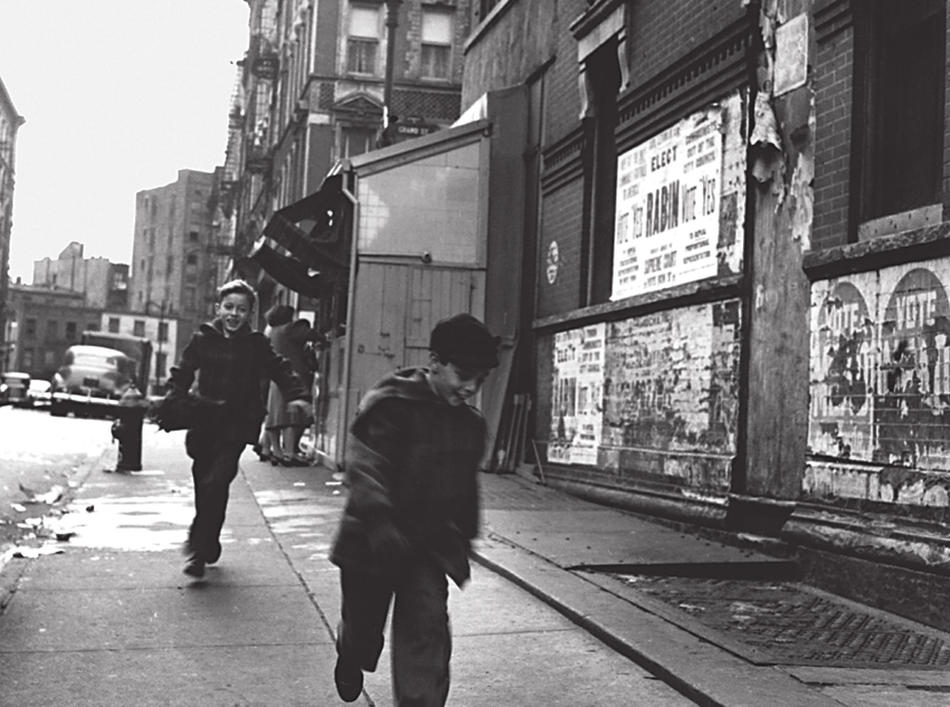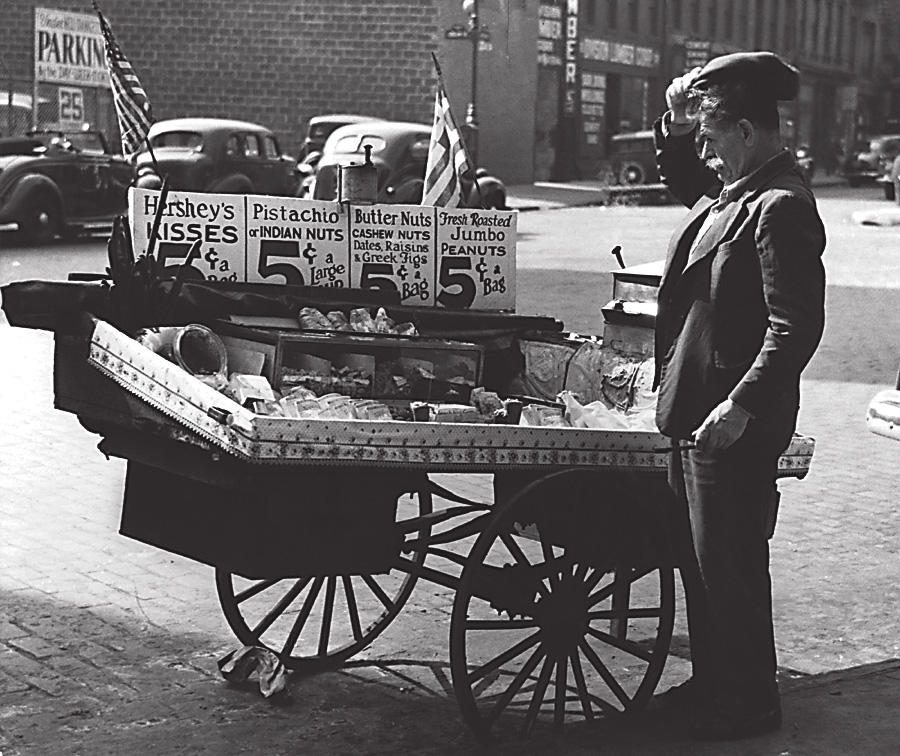In his introductory essay on growing up in the changing Lower East Side of the 1940s, Peter E. Dans ’61PS writes that he does not wish to romanticize life in the old neighborhood. “I would not want to go back to iceboxes, wood stoves, toilets on landings, or bathtubs in the kitchen . . . ” But, he tells us, it “was filled with love and a sense of history and community that smoothed out the rough spots and made all the difference.”
That sensibility is clearly present in Life on the Lower East Side, a beautiful collection of black-and-white photographs by Rebecca Lepkoff, who is now 90 and still taking pictures. Amazingly, this collection of some 150 images, most made while she was a member of Sid Grossman’s Photo League, is the first monograph of her important work. Admirers of street photography will recognize a handful of her pictures, so this thematic grouping will greatly enhance her reputation.
Lepkoff’s photos freeze the dramas on the sidewalks, crisscrossed with the shadows of the Third Avenue El; and re-create the demolished tenements with their long-since scattered residents, who lived and labored in the neighborhood bracketed by the Brooklyn and Manhattan bridges. Like Dans, Lepkoff grew up in the area, and she photographed its locals as an insider; the dockhands, peanut vendors, loafers, mothers, and kids who meet her gaze in these pictures seem to greet her as a neighbor lady. She’s not slumming; this is her territory.
She photographed it in the nick of time. Robert Moses built the Alfred E. Smith Houses there and thus, writes Dans, “replaced a neighborhood of 1700 people living in sturdy low-rise brick housing that harked back to the area’s seafaring, colonial, and immigrant past with an enclave of banal high-rise buildings.” But if you look hard at Lepkoff’s pictures of Hester Street or Fulton Street, you can just about hear the snap of laundry on clotheslines, the laughter of girls skipping rope, and the shouts of fruit vendors rolling their pushcarts on the cobblestones.




